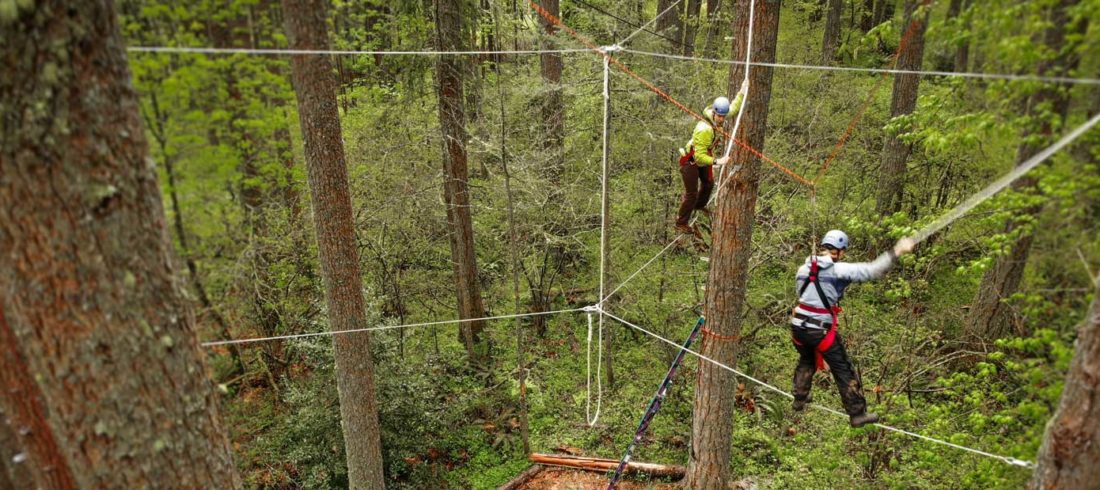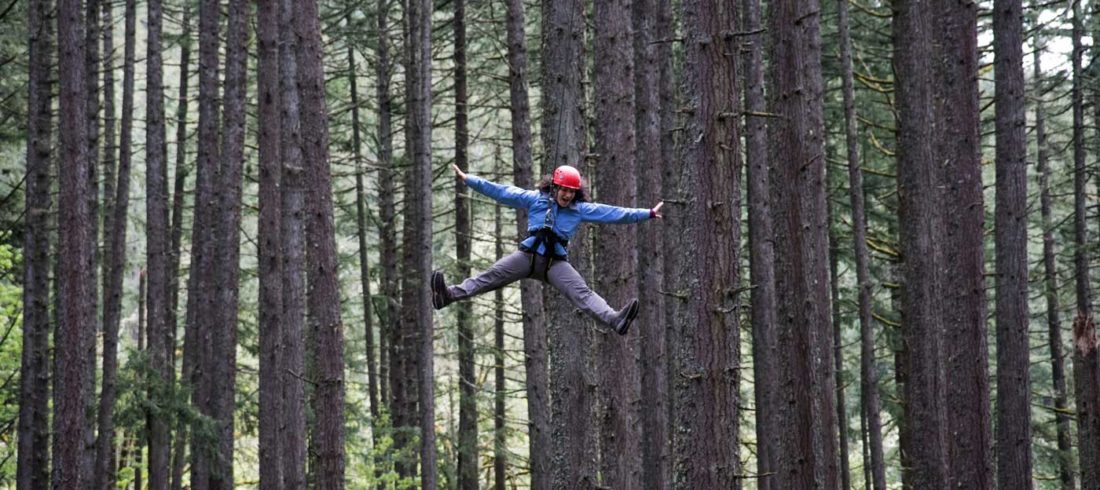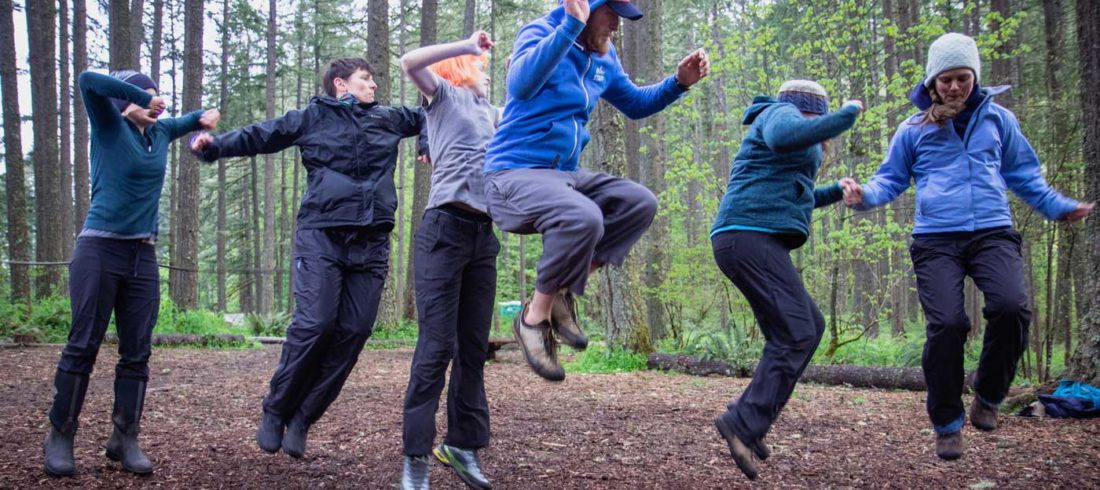There are many ways to make yourself a better person. There are seminars to help you become a more effective leader and weekend retreats to help you make friends, for example, but very few invite you to climb 55 feet up in the air and walk on a tightrope. The Spencer Butte Challenge Course is the exception.
The Challenge Course, part of the City of Eugene’s parks programs, is the only one of its kind in Eugene and Springfield. Open April to November, nestled just off the main trail of Spencer Butte Park, it’s a jungle of ropes, platforms, and poles tangled among towering Douglas firs.
Robert Brack, the course supervisor, says it’s a place that will change a person for the better. “A challenge course is meant for a group to discover and explore and challenge themselves to achieve more than they thought they were capable of,” Brack says.
The course teaches groups—ranging from employees working on office communication to nervous kids meeting new friends on their first day of camp—how to solve problems and improve relationships. “It’s a blast,” Brack says. “There’s no other way you can learn those things than climbing up in Douglas fir trees, 40 feet off the ground.”

Group sizes range from seven to 70 people, although the core activities generally remain the same, no matter the size of the group. The challenge course features 26 different high and low “elements,” from swinging ropes to balance beams. Brack and the other course leaders, called “programmers,” lead groups through outdoor adventures.
The groups start low to the ground, because, Brack says, it’s a little intimidating to begin the day up in the air. Instead of climbing in the trees, groups start with terrestrial activities that foster teamwork and communication, like the Butte Balance, a wide, flat balance board that group members crowd onto, attempting to maintain their balance despite the number of people. It relies heavily on communication and preps groups for later aerial activities.

“It’s what we call sequencing,” Brack says. “We start out small, give them a challenge that’s on the ground. So then, when we ask them to walk on a wire or a rope 40 feet in the air, they’re like, ‘Okay, I’ve sort of done that on the ground, let’s see if I can challenge myself to do that up high.’”
When that time comes, the programmers fit group members into safety harnesses, then take them into the trees. All of the high elements are 25 to 55 feet off the ground, and most of them have cheeky names. Dangling ropes are less intimidating when they’re called the “Santiam Shuffle,” or the “Elvis,” an element featuring two ropes spanning two trees. When a person shuffles on the ropes, their legs shake, similar to Elvis’ signature dance move.
Although most of the high elements allow only one person to ascend at a time, the entire group remains involved. Their harness system is based on weight: one person needs the weight of the group to shimmy up those ropes and trees. “The idea is that everyone is involved, everyone is doing something, and everyone is helping that one person to be successful,” Brack says.
The course is all-inclusive and all-accessible. Brack says they regularly work with groups who use wheelchairs and can tailor the course to fit someone’s particular needs. Programmers also never force participants to do any activities, as the act of choosing to do something that seems risky or challenging is what makes a challenge course work.

“If you’re stretched and pushed a little bit and accept a little bit of risk, then there’s a lot that you can learn about yourself while you do that, and there’s a lot you can learn about the group when you do that,” Brack says.
The Challenge Course has inspired repeat customers like Chuck Kalnbach, a former Coast Guard member and current management professor at the University of Oregon’s Lundquist College of Business. He used challenge courses in the Coast Guard and found them so effective, he’s taken his classes to the Spencer Butte Challenge Course twice a year since 2005. “My goal is to help move them out of their comfort zone, into their learning zone, but keep them just below their panic zone,” Kalnbach says. “That’s where real learning occurs.”
For both Brack and Kalnbach, the Spencer Butte Challenge Course is better than any conference or seminar. It’s about strapping on a harness and doing something that scares you but helps you grow. It’s the chance to fly high and learn something about yourself while doing it.
Spencer Butte Challenge Course, Spencer Butte Park, 301 N Adams St., 541/682-6324, eugene-or.gov/751/Challenge-Course

